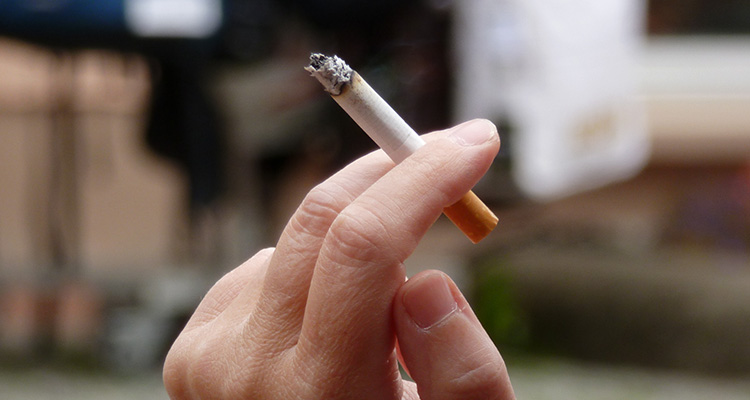Back in January, we were regaled by a slew of headlines like “Most Cancers Caused by Bad Luck” (The Daily Beast) and “Most Types of Cancer Just ‘Bad Luck,’ Researchers Say” (Time).
The stories were based on a study that suggested that around two thirds of the cancers it considered were dominated by stem cell division rates, and not environmental factors.
The paper – and the subsequent media coverage – got a lot of flack for questioning conventional understanding that what you do and where you live are important in determining your chances of developing cancer.
Now, a new study has just been published in the journal Nature that calls the so-called “bad luck hypothesis” into question, and concludes that cancer risk is heavily influenced by external factors.
In the new study, Song Wu and colleagues directly challenge the “bad luck” paper by Cristian Tomasetti and Bert Vogelstein. Using four separate approaches, they systematically undermine the idea that most cancers are due to cell division rates, and not external (what they refer to as “extrinsic”) factors.
Each of the methodologies used by Wu and colleagues has its assumptions and limitations. Yet together, they build a picture of a complex interplay between internal random biological processes, and external factors, in the formation and development of cancers.
First they show that the data used by Tomasetti and Vogelstein do not exclusively support the “bad luck” hypothesis, by imagining what the data would look like in the presence of a devastating extrinsic exposure – a burst of ionizing radiation for instance.
Their analysis indicates that the data would look similar, even if cancer rates were driven by external, and not internal, factors.
Next, they develop a new model to explain the cancer risk data (including a number of cancers not included by Tomasetti and Vogelstein).
Here, they assume that the lowest lifetime risks recorded for a given cancer are due to “intrinsic” factors – cell division rates, while risks above this lower limit are due to a combination of intrinsic and extrinsic factors.
Their model indicates that, even while cell divisions are important, in most cases, cancer risk is dominated by lifestyle and environmental factors.
As might be expected, this approach is one of the more controversial parts of the paper, as it makes the plausible but not necessarily correct assumption that, where there is variation in cancer rates, this variation can be systematically explained by the influence of intrinsic and extrinsic factors.
And as Tomasetti and Vogelstein note in comments at GENeS,
The mathematical flaw of this approach is also clear from the results. The authors concluded that >95% of brain cancers, >99% of prostate cancers, >98% of thyroid cancers, and >94% of testicular cancers are due to extrinsic factors. Epidemiologists have studied these cancers for decades and estimate that virtually none of the risk for any of these cancer types can be ascribed to extrinsic factors.
That said, the model is an intriguing one, and beyond its flaws, provides an interesting extension to how factors influencing cancer risk are evaluated.
Thirdly, they look at what they call “mutatonal signatures” in cancers – a genetic equivalent of tree rings that indicate whether a cancer is the result of a lifetime of cell divisions, or whether there’s been an external wrench in the works at some point.
In around 30 cancer signatures evaluated, they only found indications that two of them were dominated by cell divisions (and therefore came with a risk that increased with age, irrespective of external factors).
Finally, they developed a mathematical model to estimate the relationship between multiple random mutations in cells, and lifetime cancer risk – and concluded that, for most cancers, random mutations are not sufficient to account for observed cancer rates.
In part, this study is a sensitivity analysis of the “bad luck” hypothesis. It tests the idea’s robustness under different assumptions. And it suggests that the “bad luck” hypothesis is rather fragile.
Of course, the analysis is not definitive, and there are a number of assumptions made that may influence the conclusions the researchers draw.
In reality both this paper and the earlier “bad luck” one provide partial insights into the causes of cancer that are informative, but not conclusive.
Taken in isolation – especially if used to support strongly held beliefs – they are open to misinterpretation and misuse. However, as part of a growing body of research on how different factors impact the chances of developing cancer, they add to an important and evolving tapestry of knowledge.
Importantly though, they indicate that, while chance plays a role in developing cancer, there’s more than just “bad luck” to developing the disease.
And this offers hope for reducing cancer rates, buy changing the the way we live and the environment we live in.
Feature Image: Woman smoking a cigarette. Oxfordian Kissuth. CC BY-SA 3.0

